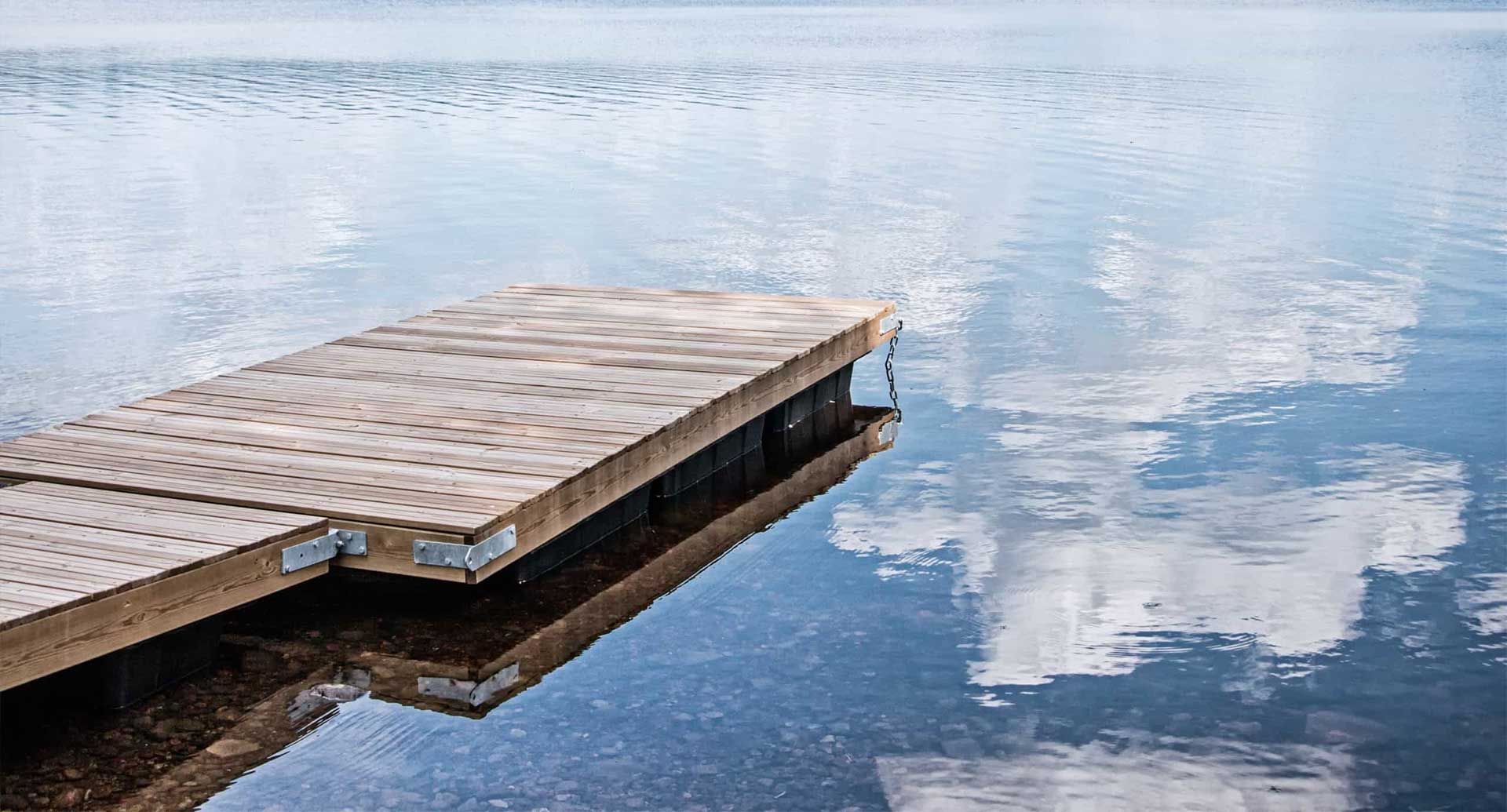Serving: Charleston - Edisto Island - Hollywood - Beaufort - Bluffton - Hilton Head
Floating Dock Anchoring Methods: Secure Your Waterfront

Floating docks are a practical and versatile solution for many waterfront properties. To ensure they remain stable and secure, it is crucial to anchor them properly. Cover various floating dock anchoring methods, providing you with a comprehensive guide to keep your floating dock in place.
Key Takeaways
- Floating docks are popular for their ease of installation and adaptability to water level changes.
- Proper anchoring methods are essential to ensure the dock remains stable and safe.
- Different environments and dock purposes require specific anchoring techniques.
- Regular maintenance and professional consultation can extend the lifespan of your dock.
Understanding the Basics of Floating Dock Anchoring
A floating dock's stability largely depends on its anchoring system. Poor anchoring can lead to significant damage or even loss of the dock. Here’s a breakdown of the most reliable methods you can use to anchor your floating dock.
Types of Anchoring Systems for Floating Docks
1. Stiff Arm Anchoring
Stiff arm anchoring involves the use of rigid arms that connect the dock to the shore. This method is highly effective in areas with minimal water level fluctuation. The stiff arms are typically made from steel or aluminum, providing robust support.
2. Cable Anchoring
Cable anchoring is a flexible method that uses cables to secure the dock to the shore or to a fixed structure. This system allows some movement, which can be beneficial in areas with significant tidal changes or strong currents.
3. Pile Anchoring
Pile anchoring involves driving piles into the seabed or lakebed. The dock is then attached to these piles, providing a very stable anchoring solution. This method is ideal for areas with fluctuating water levels.
4. Pole and Sleeve Anchoring
This method uses poles inserted into sleeves attached to the dock. The poles are driven into the seabed, allowing the dock to rise and fall with the water level. It’s a flexible and effective method commonly used in lakes and rivers.
Factors to Consider When Choosing an Anchoring Method
When selecting the appropriate anchoring method for your floating dock, consider the following factors:
- Water Depth: Deeper waters may require more robust anchoring systems like pile anchoring.
- Water Current: Strong currents often necessitate more flexible systems like cable or pole and sleeve anchoring.
- Tidal Changes: Areas with significant tidal fluctuations benefit from flexible anchoring systems.
- Dock Size and Weight: Larger, heavier docks require more substantial anchoring methods.
Installation Process for Floating Dock Anchors
Site Assessment
Begin with a thorough assessment of your site. Measure the water depth, check the seabed conditions, and observe the water current and tide patterns. This information will guide your choice of anchoring method.
Gather Materials
Ensure you have the necessary materials for your chosen anchoring method. This may include cables, stiff arms, piles, or pole and sleeve systems.
Install Anchoring Systems
Follow the installation guidelines for your chosen method. For example:
- Stiff Arm: Secure the arms to the dock and shore, ensuring they are level and properly aligned.
- Cable: Attach cables to the dock and secure them to fixed points onshore or underwater anchors.
- Pile: Drive piles into the seabed using specialized equipment, then attach the dock to these piles.
- Pole and Sleeve: Insert poles into the seabed and fit them into the sleeves attached to the dock.
Test Stability
Once the anchoring system is installed, test the dock's stability. Ensure it remains secure under various conditions, including high tides and strong currents.
Maintenance Tips for Floating Dock Anchors
Regular maintenance is crucial to ensure the longevity and safety of your floating dock. Here are some maintenance tips:
- Inspect Regularly: Check the anchoring systems periodically for signs of wear, rust, or damage.
- Tighten Connections: Ensure all bolts, cables, and connections are tight and secure.
- Replace Worn Parts: Replace any worn or damaged parts promptly to prevent further issues.
- Consult Professionals: If unsure, consult a marine construction professional for maintenance and repairs.
Common Mistakes to Avoid
To ensure your floating dock remains secure, avoid these common anchoring mistakes:
- Underestimating Water Depth: Always measure water depth accurately before selecting an anchoring method.
- Ignoring Tidal Changes: Consider tidal fluctuations to prevent your dock from becoming submerged or stranded.
- Using Inadequate Materials: Use high-quality, marine-grade materials to withstand harsh conditions.
- Poor Installation: Ensure proper installation to avoid instability and potential damage.
- Neglecting Maintenance: Regularly inspect and maintain your anchoring systems to prolong their lifespan.
Real-Life Experiences and Case Studies
Stono River Dock Installation
A client on the Stono River required a robust anchoring system due to strong currents and tidal changes. After assessing the site, pile anchoring was chosen. The piles were driven deep into the riverbed, and the dock was secured to these piles. The installation proved successful, providing the dock with the stability needed to withstand the challenging conditions.
Beaufort Floating Dock Project
In Beaufort, a floating dock was installed for a residential property. Given the moderate water depth and gentle currents, a pole and sleeve anchoring system was selected. The poles allowed the dock to rise and fall with the water level, providing flexibility and ease of access.
Key Points to Remember
- Floating docks offer flexibility and are suitable for various waterfront environments.
- Stiff arm, cable, pile, and pole and sleeve anchoring methods provide different advantages depending on site conditions.
- Proper installation and regular maintenance are essential to ensure the dock’s longevity and safety.
- Consulting marine construction professionals can provide valuable insights and ensure your dock is securely anchored.
By understanding and implementing these floating dock anchoring methods, you can ensure your dock remains stable and secure, providing you with a safe and enjoyable waterfront experience.
Enhancing Your Dock’s Longevity
Taking proactive steps to maintain and enhance your dock’s anchoring system can significantly extend its lifespan. Consider these additional tips:
- Seasonal Adjustments: Make seasonal adjustments to your dock’s anchoring system to accommodate changes in water levels and weather conditions.
- Use Protective Coatings: Apply protective coatings to metal components to prevent rust and corrosion.
- Upgrade Anchors: Consider upgrading your anchors to more robust systems as needed, especially if environmental conditions change.
Final Words
Anchoring your floating dock effectively is key to ensuring its stability and safety. By understanding the different anchoring methods and choosing the right one for your specific conditions, you can enjoy a secure and long-lasting dock. Don’t forget to perform regular maintenance and consult professionals when needed to keep your dock in top shape.
Follow us on Instagram
Business Hours
- Mon - Fri
- -
- Sat - Sun
- Closed
All Rights Reserved | Baker Marine Contracting | Website Created by: Kickstart Local
























































